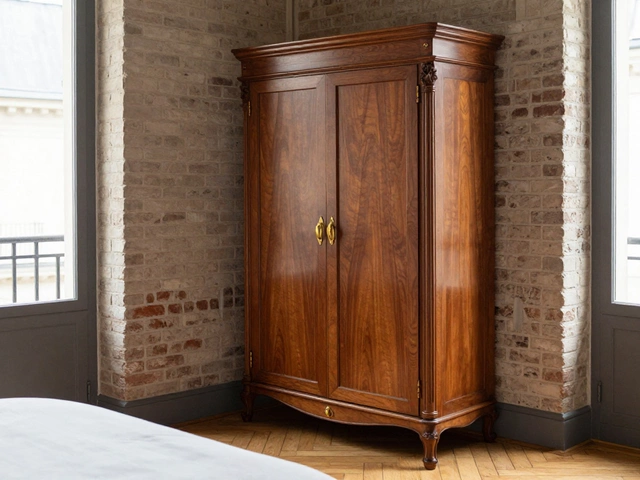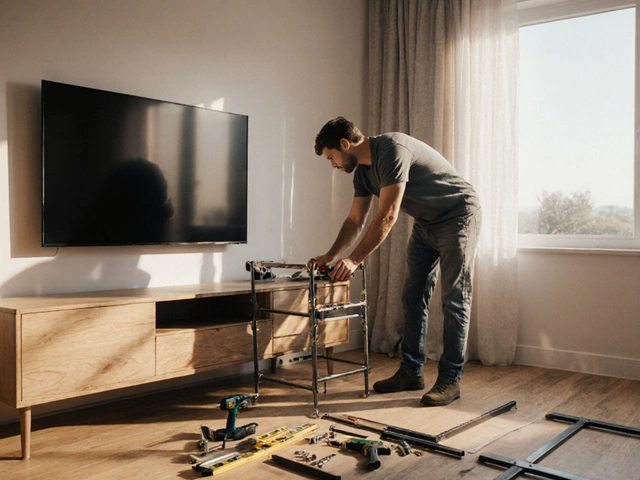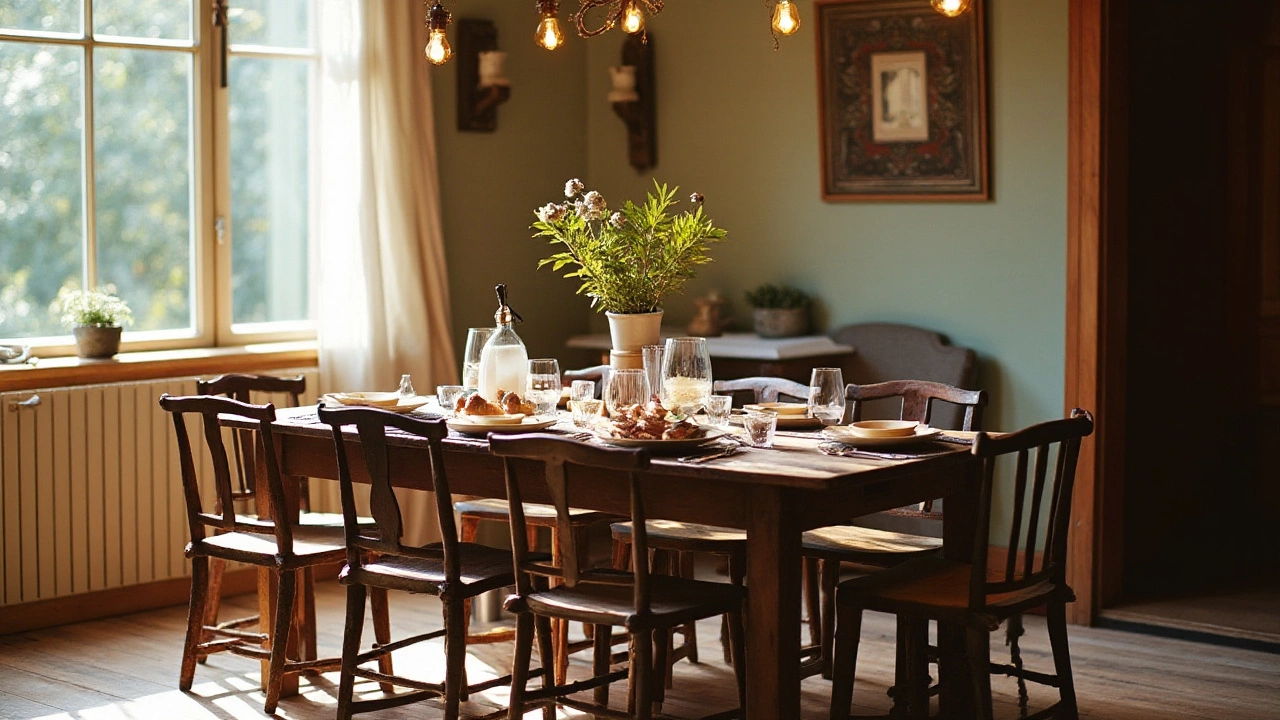
The heart of any home is arguably the dining room, a place where family and friends gather, stories are shared, and meals are enjoyed. When it comes to setting up your dining space, one practical question arises: how many chairs should you place around your table? While it might seem like a straightforward decision, several factors can influence your choice and help you create the ideal environment.
Before deciding, it's good to consider the dimensions and shape of your dining table, assess the available space in your room, and think about your typical number of guests. It's not just about squeezing in as many chairs as possible but about ensuring comfort and ease of movement. With some insight and helpful guidelines, you can create a space that combines elegance with practicality.
- Understanding Table Dimensions
- Considering Your Space
- Catering to Family and Guests
- Balancing Style and Function
- Guidelines for Comfortable Spacing
Understanding Table Dimensions
When choosing the perfect dining table, the one thing to remember is how its dimensions play a pivotal role in determining how many chairs can fit comfortably around it. It's not just about the size or shape; it's about the magic number that can gather around it for a meal without feeling squeezed. A standard rule of thumb is that each diner should have about two feet of space to themselves. This ensures they can eat their meal without knocking elbows, which may sound odd but happens more often than we think. The elbow room is just one factor that dictates how many dining room chairs can comfortably fit your setup.
Dining tables come in a variety of shapes - rectangular, round, square, and oval. Each of these shapes has its unique dimension requirements and seating style. For instance, a rectangular table is perfect for formal dining rooms, typically measuring between 36-42 inches in width. This kind of table is perfect for seating more than six guests. In contrast, round tables are great for a cozy setup, usually 36-60 inches wide, seating four to eight people, creating a more intimate dining experience. Then there's the square table, which mirrors the round table's seating capacity, offering more personal space.
The length of your dining table is also essential. A general guideline suggests that for every person, an additional 24 inches in length is needed. For example, to seat eight people, most rectangular tables need to be about 96 inches long. Shape, space, and personal style—these are the elements that will define your choice. The goal is to strike the right balance between aesthetics and functionality. You don't want a glossy extended table in a room that can barely hold half of it. Measure twice, buy once—truer words have never been spoken.
Why does it matter so much? Because everyone has their style, and while some prefer a cozy, tightly-knit dining environment, others lean towards roomy settings where elegance takes center stage. According to an interior design expert, "The dimensions of your table are as crucial as choosing the dining room furniture itself. It's what makes the environment inviting without compromising comfort." Naturally, these dimensions need careful consideration, especially if family gatherings and holiday dinners frequently happen at your place. It's easier to pull out an extra folding chair when needed, rather than wishing you had gone for the size up when you first purchased your table.
Consider the distance between your dining table and the walls, creating a comfortable path for diners to sit and stand up without a hassle. As a guideline, aim for about 48 inches on each side of the table. This spacing factor eventually affects how many dining room chairs you can fit. No one enjoys squeezing past family members to reach their seats or, even worse, accidentally nudging them with a chair leg. The room layout influences the decision on buying folding chairs over ones with arms. It's all about using what's there to maximize space while making it look effortless.
Lastly, think about extendable tables if your spatial needs often fluctuate. These ingenious tables can accommodate surprise guests seamlessly while maintaining the appeal of a standard-sized table. They take a little bit of pre-planning and can save you a mountain of trouble down the line. It's what every practical homeowner considers for a bustling household filled with occasional visitors. Stretching the limits yet staying within the spatial thresholds of comfort, such solutions will keep your dining space both stylish and functional.
Considering Your Space
When you're figuring out how many dining room chairs to arrange around your dining table, the size and flow of your room play an essential role. It’s important to ensure that your space doesn’t feel cramped or cluttered. First things first, think about the size of the room. Measure the dimensions of your dining area, including the space around the table where people will move around. Experts suggest having at least 36 inches of clearance between the edge of the table and the wall or any other furniture. This provides room for chairs to slide out comfortably and allows people to walk behind those who may be seated.
Next, consider the architectural features of your dining area. Do you have a cozy nook that's perfect for intimate family dinners, or are you blessed with a spacious open-plan room that can host larger gatherings? Your room's spatial dynamics greatly influence how many chairs will fit without hindering movement or comfort. Some people like to mix and match chair styles to break a monotonous look while keeping the arrangement functional—this is where creativity meets practicality.
Another key point to think over is the overall ambiance and purpose of the dining space. Do you envision your dining area to be a formal setting reserved for special occasions, or is it designed for everyday family meals? This decision can impact how you arrange seating. If it's a more casual setting, a bench on one side of the table might add a relaxed and inviting feel, which can be an ingenious solution when space is at a premium.
An insightful tip from John Salofsky, a renowned interior designer, states,
"The dining room should be a reflection of your lifestyle. Consider who often sits at the table and incorporate furniture that enhances your space without overwhelming it."
It's also practical to think about traffic patterns in your home. From which direction do people usually enter the dining area? Is there a need for a clear path between the kitchen and the dining table? Strategic planning of your chair placement, based on accessibility, can improve the functionality of your home notably. In open floor plans, you might need to use the dining arrangement as a natural boundary between different zones without physically closing off spaces.
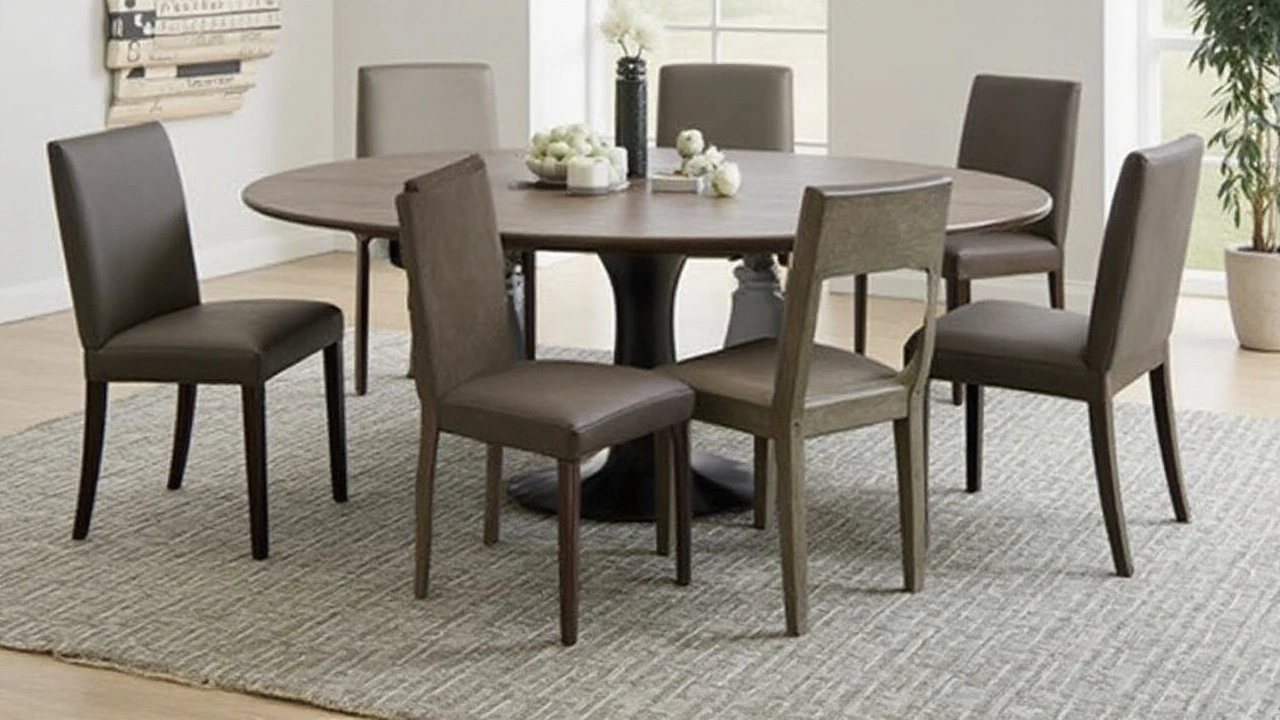
Catering to Family and Guests
When it comes to selecting the right number of dining room chairs for your table, one of the key aspects to think about is the number of family members and guests you'll typically have around. Start by considering your immediate family. Do you have children, or perhaps grandparents living with you? Each of these details plays into how many seats you should plan for on a daily basis. If you frequently host dinners or holiday gatherings, this area requires even more consideration. Being prepared with an accommodating arrangement can make everyone feel welcome.
Consider the holidays, when distant relatives may drop by, and you'll want everyone to have a comfortable seat. It's wise to have extra chairs on hand, easy to bring out when that guest list swells. For some, this means having a few stylish, stackable chairs that don't take much room when not in use. Others might opt for benches, which can seat more without taking up excessive space. A practical approach is to maintain a couple of light, portable chairs in a nearby closet, easily accessible when the need arises.
Interestingly, studies from various home design experts suggest that people feel more at ease in a space that's prepared and uncluttered. According to a survey published in 'Decor Insight', 75% of people who engaged in frequent hosting activities favored a flexible seating plan that could be easily adjusted on the go.
"A dining area that can swiftly transition from a family hub into a bustling banquet makes frequent hosting both enjoyable and stress-free," noted the magazine.Recognizing the balance between everyday comfort and the ability to entertain can ensure that you create the perfect atmosphere for any occasion.
When catering for guests, also consider the style and ambiance you want to convey. A coordinated setup in harmony with your home’s theme conveys a welcoming and cohesive atmosphere. Some prefer a classic look with matching chairs and table, while others go for an eclectic mix, combining different styles and textures without losing functionality. An important thing to remember is that having the right number of seats is less about a strict number and more about making your guests feel cherished and at ease. As you decide, remember to also think about the ambience that resonates with your style.
If your dining room is prone to change with the seasons, you might consider adaptable pieces that work year-round. Investing in quality, movable seating can offer versatility, allowing you to create an intimate gathering spot for quiet meals or expand out to a larger setup capable of hosting a festive gathering. The perfect arrangement will be rooted both in practical needs and in the kind of environment you hope to nurture within your home. Balancing these elements will help you cater to any number of friends and family with grace and style.
Balancing Style and Function
When it comes to choosing dining room furniture, striking the perfect balance between style and functionality can seem like walking a tightrope. On one hand, the aesthetic appeal of your dining area sets the tone for the entire home, one that should reflect your personality and charm. On the other, the dining room must serve its practical purpose, providing a comfortable and welcoming environment where people can sit together, enjoy meals, and engage in long conversations. Harmonizing these elements isn't just about finding the fanciest chairs or the most expensive tables; it's about thoughtful integration of style with everyday living standards.
Practicality should never be compromised for style. A beautifully designed chair that looks like it's straight out of a magazine won't mean much if it's uncomfortable to sit on for any length of time. Dining room chairs need to provide good back support and should fit well with the height of the dining table to ensure a pleasant seating experience. The materials used in the furniture must withstand daily wear and tear; fabrics that are easy to clean and frames that are durable make life easier. Consider including materials like treated leather or stain-resistant cloth to extend the life of your chairs while keeping them looking sleek.
There's a wide variety of styles, ranging from the elegance of vintage pieces to the sleek lines of modern-day design. Popular choices include rustic styles, which offer a warm, homey vibe, and contemporary designs that feature minimalist aesthetics. Each style has its own appeal, but practicality remains the key. According to interior designer, Emily Henderson,
"Your dining room isn't just for the odd occasion – it should suit the daily grind as well as special events."Investing in versatile pieces means your dining set won't go out of style quickly and will adapt as your tastes evolve. Mixing and matching textures or introducing contrasting colors can create unique visual interest while maintaining coherence with the overall home decor.
The magic formula to get the best out of your dining table setting often includes creating enough space for everyone, while also allowing enough room for diners to move about freely. As a rule of thumb, a clearance of at least 36 inches from table edge to wall is advisable to facilitate easy movement. This distance ensures that chairs can be pulled out and that there is sufficient space to pass behind seated diners, creating an inviting and accessible ambience. Integrating elements like extendable tables or foldable chairs can further add to the versatility of your seating arrangement, especially during large gatherings.
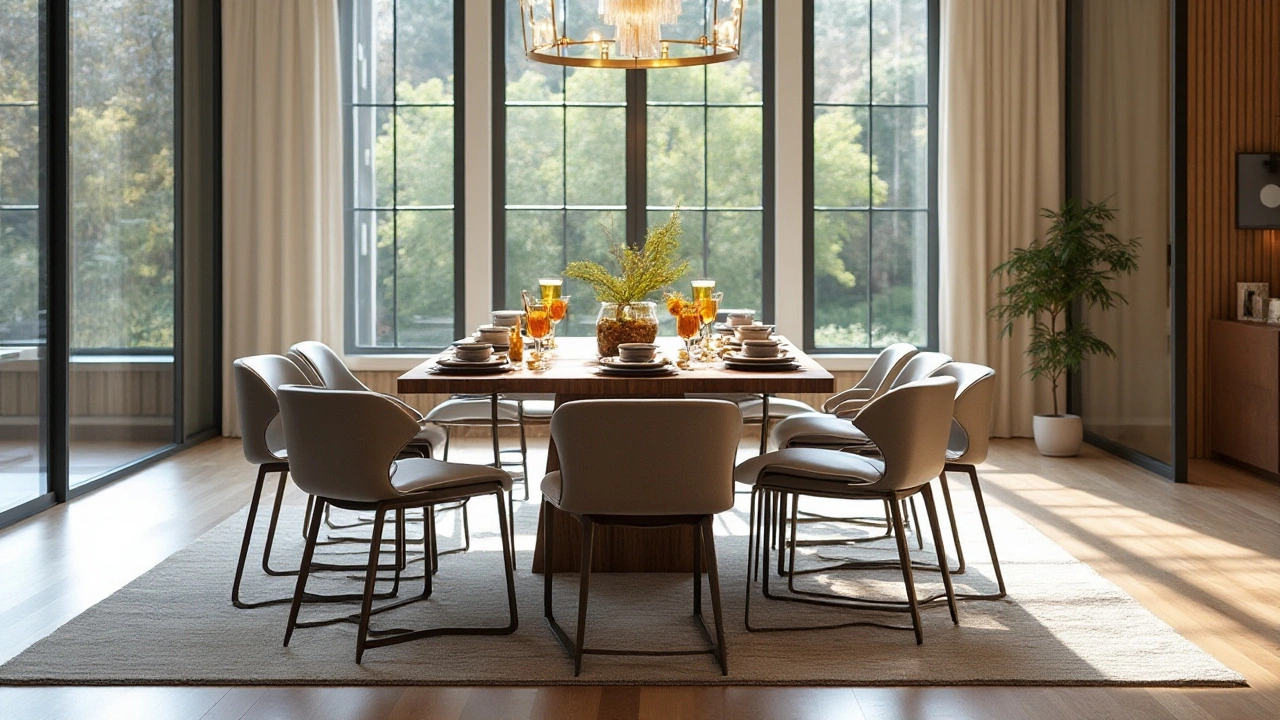
Guidelines for Comfortable Spacing
When it comes to arranging dining room chairs around your table, ensuring comfort is key. No one wants to feel squashed or restricted during a meal, and having the right amount of space can make all the difference. A standard rule of thumb suggests that each diner should have about 24 inches of space for themselves. This ensures that everyone can enjoy a meal comfortably without bumping elbows. Such spacing allows for free movement and an enjoyable dining experience.
Consider the dimensions of your dining table when planning how many chairs to add. Rectangular tables, for instance, might require fewer chairs on the ends to avoid overcrowding. Circular tables often encourage more intimate conversations but may require fewer chairs to maintain balance. It's also vital to consider the chairs' design—some designs are bulkier than others. Sleek, minimalist styles tend to allow more room around the table and contribute to a airy dining area.
Safety is also paramount when planning your dining arrangement. Ensure there's enough space between the chair and wall or other furniture for guests to get in and out of their seats with ease. Ideally, provide about 36 inches between the table edge and surrounding furniture. This ensures both kids and adults can comfortably slide their chairs back without obstruction.
"The dining room is a place to make memories," says interior design expert, Sophie Allport. "Proper spacing means those memories are made without fuss or discomfort."
Now, let's delve into the numbers a bit. If you're often hosting gatherings, it might be useful to have extra folding chairs that can be easily stored and brought out when needed. While maintaining the recommended 24-inch space, a regular 6-foot rectangular table typically accommodates six normally-sized chairs. Adding a couple of extra chairs may work for occasional larger groups but don't overwhelm the space to the point of discomfort.
Lastly, think about your lifestyle and how you use your dining space. Some families use their dining table for work or school activities, so extra space could come in handy. If you're someone who loves dinner parties, you might want to configure your space for those events, even if it means pulling a few extra dining room chairs up to the table from time to time. By tailoring the arrangement to your personal needs, you'll create a welcoming zone that adapts to all occasions.

